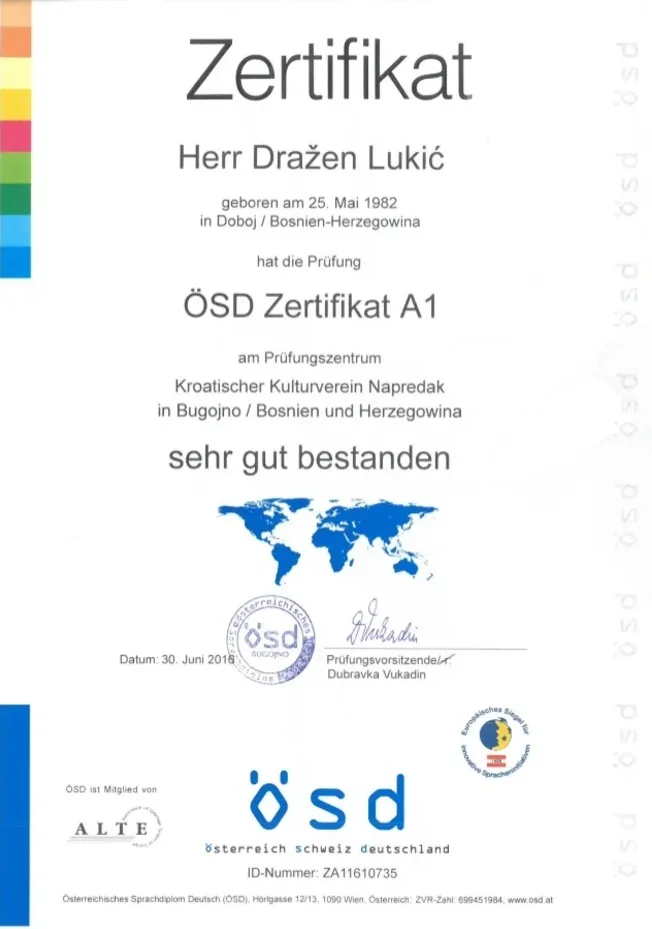Understanding the Austrian Language Test: Importance, Structure, and Preparation
Austria, a stunning country known for its sensational landscapes, abundant history, and dynamic culture, is likewise home to a distinct linguistic identity. While German is the official language of Austria, the variations in dialects and subtleties can be rather different from standard German, making language proficiency a vital aspect for immigrants who wish to live, work, or research study in the country. One substantial step in attaining efficiency in German as spoken in Austria is the Austrian Language Test (ÖSD - Österreichisches Sprachdiplom Deutsch). This article checks out the significance, structure, and preparation methods for the Austrian Language Test, as well as often asked concerns, to assist people navigate this necessary process.
Importance of the Austrian Language Test
The Austrian Language Test serves many purposes, each highlighting the significance of language proficiency in interaction and integration:
Social Integration: Proficiency in the regional language fosters better communication and relationship-building, necessary for individual and professional interactions in Austria.
Academic Opportunities: Non-native German speakers wishing to enlist in Austrian universities must show their language efficiency through the ÖSD, ensuring they can follow coursework effectively.
Work Eligibility: Many employers in Austria need evidence of language proficiency, making the ÖSD an essential accreditation for task candidates.
Residency and Citizenship: For immigrants getting residency or citizenship, evidence of language proficiency is often a requirement, highlighting the value of understanding the local language and culture.
Cultural Appreciation: Learning the language boosts the understanding of Austrian custom-mades, traditions, and literature, causing a deeper gratitude of the country's cultural landscape.
Structure of the Austrian Language Test
The Austrian Language Test is divided into several levels to examine a person's command of the German language, lined up with the Common European Framework of Reference for Languages (CEFR). The test comprises the following crucial parts:
Levels of the Test
A1: Beginner level-- Basic understanding of daily expressions and familiar phrases.
A2: Elementary level-- Ability to communicate in simple jobs needing a direct exchange of details on familiar subjects.
B1: Intermediate level-- Understanding of the primary points in clear standard input, including conversations on work, school, and leisure.
B2: Upper-intermediate level-- Ability to communicate with fluency and spontaneity while going over a range of intricate topics.
C1: Advanced level-- Proficiency in understanding a vast array of requiring, longer texts, and expressing concepts with complete confidence.
C2: Mastery level-- Near-native proficiency, comprehending practically whatever heard or read and revealing oneself spontaneously.
Exam Structure
The ÖSD generally consists of four main parts:
Checking Out Comprehension: Participants check out numerous texts and respond to concerns to evaluate their understanding and analysis abilities.
Composing: Candidates write essays, letters, or reports based on triggers to examine their capability to communicate concepts plainly and effectively.
Listening Comprehension: This area includes listening to audio recordings, followed by questions developed to assess listening abilities and comprehension.
Speaking: This part includes oral interviews or discussions, where candidates should show their speaking capabilities in real-life circumstances.
The tests are created to be engaging yet challenging, guaranteeing that candidates can showcase their language capabilities accurately.
Preparation for the Austrian Language Test
Preparing for the Austrian Language Test requires a structured approach to ensure proficiency throughout all 4 skills: reading, writing, listening, and speaking. Here are numerous preparation techniques to think about:
1. Enlist in Language Courses
Language Schools: Many language schools in Austria use courses specifically created to prepare trainees for the ÖSD. These courses often focus on the types of materials covered in the test.
Online Classes: Various online platforms offer interactive language lessons, enabling students to study at their own speed.
2. Practice with Past Tests
Candidates can access previous ÖSD evaluation documents or sample tests to acquaint themselves with the concern formats and exam structure.
3. Engage in Language Exchanges
Joining language exchange programs or discussion clubs enables candidates to practice speaking with native German speakers and other students, enhancing their confidence and fluency.
4. Make Use Of Language Learning Apps
Duolingo: Provides interactive language video games and workouts customized to different proficiency levels.
Babbel: Focuses on discussion skills, providing real-life dialogues vital for spoken communication.
5. Immerse in the Language
Listen to German Media: Consuming German music, podcasts, and audiobooks assists enhance listening understanding.
Read Literature: Reading German books, papers, and publications exposes learners to various writing designs and vocabulary.
6. Employ a Language Tutor
Working individually with a qualified language tutor can help customize finding out experiences to focus on individual weak points and enhance specific skills.
Regularly Asked Questions (FAQs).
Q1: How long does it require to get ready for the Austrian Language Test?
A1: Preparation time varies based upon the individual's beginning efficiency level. Usually, it might take a few months of consistent research study to prepare for a specific level.
Q2: Is the ÖSD test recognized internationally?
A2: Yes, the ÖSD test is commonly acknowledged as proof of German language proficiency and is typically needed by universities and employers in German-speaking nations worldwide.
Q3: How much does the Austrian Language Test expense?
A3: The cost of the ÖSD varies depending upon the screening center and place. Typically, costs range from EUR150 to EUR300.
sprachzertifikat deutschland : Can I retake the test if I do not pass?

A4: Yes, candidates can retake the ÖSD as numerous times as needed to attain their desired efficiency level.
Q5: What resources are best for exam preparation?
A5: Recommended resources consist of textbooks tailored for ÖSD preparation, online courses, language apps, past exam documents, and regional language workshops.
Conclusion.
The Austrian Language Test plays a vital function in aiding non-native speakers to incorporate efficiently into Austrian society. Attaining skills in the language not just opens doors to academic and expert opportunities however also cultivates a deeper connection with the country's rich cultural heritage. With the ideal resources and method, mastering the subtleties of the Austrian German dialect ends up being a fulfilling journey toward effective integration.
